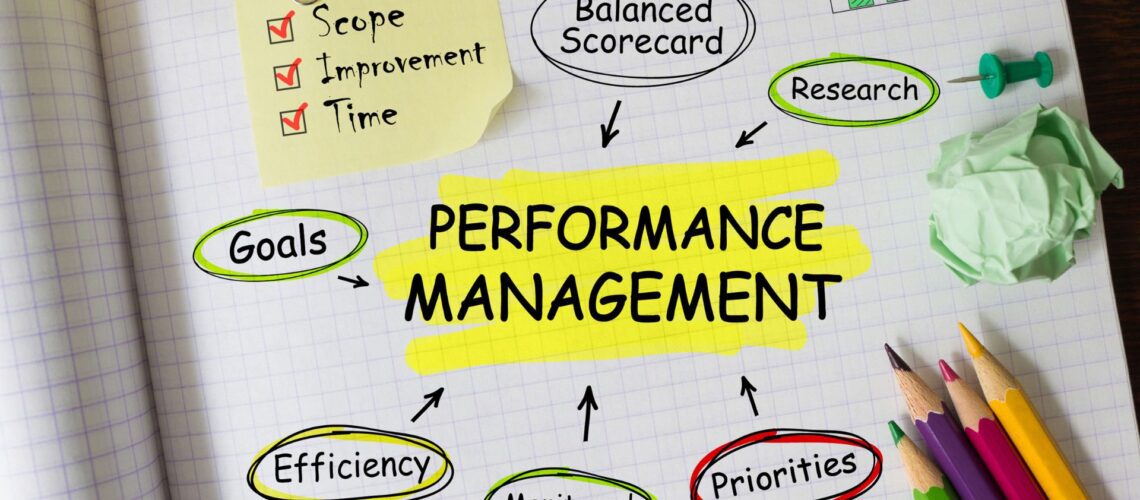Whether you’re a first-time manager or experienced and have a new team, there’s always so many things to think about and do.
Like me, you may have come across one of those books in the airport with a catchy title – ‘Your First 30 or First 90 Days as a Manager’ – and had a flick through to see if you’re on track. You may have even bought a copy.
Usually these ‘airport books’ are full of great suggestions. However, in today’s business landscape, one of the areas I’ve often found has less focus is the broader topic of employee engagement. Often this subject is associated with the more prominent organisational picture and the annual company ’employee engagement survey’.
Which is why this article explores what leaders can do when they start managing a new team to get employee engagement off to a flying start.
1. Get Off to a Good Start: Leading vs Managing
People want to be led. This fundamental truth should guide how you approach your new team.
Let’s look at some simple definitions of the words manage and lead. Manage is “to be in charge of,” whilst the definition of the word lead is “to be an example for others to follow.” Whilst both are important, managers often forget the latter.
Employees thrive under great leadership. They look for leaders who walk their talk, who have a vision, and can inspire their team to follow them on the journey. Research from Gallup demonstrates that managers influence up to 70% of the variance in employee engagement1, highlighting the critical role leadership plays.
The distinction matters because teams that are merely managed may complete tasks adequately, but truly engaged teams consistently exceed expectations, demonstrate initiative, and contribute innovative solutions.
2. Have a Purpose, Do Meaningful Work
Most managers understand how busy schedules are and the pressures teams routinely experience. The risk is that as you and your team get focused on everything on your task list – meeting regulatory deadlines, clinical trial coordination, managing the appropriate systems and processes, and everything else on your growing to-do list – the purpose and meaning behind your team’s work can take a back seat.
Remember people are more engaged when they’re involved in work that has meaning. Sometimes you must remind them how important their work is.
Connecting Daily Tasks to Real Impact
If your work is within the pharmaceutical world, you might be tasked with ensuring correct processes are being used for clinical trial data collection. This isn’t just about checking the system is being followed.
What your team are doing is creating the possibility for a grandma to see her granddaughter walk down the aisle. For a dad to watch his son represent his school football team. For a husband and wife to celebrate their wedding anniversary together for as long as they can.
There’s nothing much more meaningful than giving individuals across the globe an opportunity to live a longer, healthier life.
Whatever the role within an organisation, leaders should spend time helping their teams seek the deeper purpose behind what they do. This connection to meaningful work becomes particularly important during challenging periods when immediate pressures might otherwise feel overwhelming.
3. You Can’t Escape It: Performance Management
It’s widely accepted that employees are more engaged when they know what’s expected of them and they understand their goals. When managers set out this expectation with clarity and use performance management to support team members to achieve their goals, it’s hardly surprising employees usually become more productive, creative, and profitable contributors.
Focus on getting good at using your company’s performance management tools.
Making Performance Management Work
Set clear expectations early. In your first few weeks, have individual conversations with each team member to understand their current responsibilities and where they want to develop. Use these discussions to establish clear, measurable objectives that align individual roles with team goals.
Create regular check-in schedules. Rather than relying solely on formal review periods, implement weekly 15-minute check-ins with each team member to discuss progress, obstacles, and support needs. These brief, regular conversations prevent small issues from becoming major problems.
Provide both recognition and guidance. Acknowledge achievements specifically and publicly, whilst offering constructive feedback privately that helps individuals improve.
4. Self-Awareness: Yours and Your Team’s
Engaged teams usually have good managers, and one characteristic of a good manager is their level of self-awareness. They know what they’re good at and what’s not a strength. They look to capitalise on their strengths and recruit team members whose strengths will complement theirs.
Similarly, good managers coach their team to build their own level of self-awareness, whilst at the same time focusing their coaching on developing strengths rather than weaknesses.
Building Self-Awareness
For yourself as a leader: Conduct honest self-assessment of your leadership strengths and development areas. Seek feedback regularly from team members, peers, and supervisors. Identify complementary team members whose strengths offset your limitations.
For your team members: Use strengths-based assessment tools to help them understand their natural talents. Provide regular feedback that helps individuals recognise their impact and effectiveness. Create opportunities for team members to reflect on their work preferences and motivations.
Practice vulnerability by acknowledging when you need support or don’t have all the answers. This authenticity builds trust and creates permission for your team to do the same.
5. Communicate, Communicate, Communicate
A Gallup survey on communication found that consistent communication – whether it occurs in person, over the phone, or electronically – is connected to higher engagement. For example, employees whose managers hold regular meetings with them are almost three times as likely to be engaged as employees whose managers don’t1.
Though the survey is a few years old, it’s still as relevant today.
Communication in Practice
Whilst virtual working may not allow for face-to-face meetings, the point here is more about regular meetings. Too often employees at various levels in organisations report that their one-to-ones with a manager has been cancelled, and not only once but on several consecutive occasions.
Gallup goes on to say in their findings: “The best managers make a concerted effort to get to know their employees and help them feel comfortable talking about any subject, whether it is work related or not. A productive workplace is one in which people feel safe – safe enough to experiment, to challenge, to share information, and to support one another.”
Protect your meeting time. Schedule regular one-to-one meetings and treat this time as sacrosanct. Your team will notice when you consistently prioritise these conversations versus when you regularly cancel them.
Create psychological safety. Build environments where team members feel comfortable discussing any subject. This safety enables experimentation, challenge, information sharing, and mutual support – all critical components of team engagement.
Use multiple channels. Accommodate different communication preferences and situations. Some team members may prefer face-to-face conversations for complex topics whilst being comfortable with quick messages for simpler matters.
6. Show Appreciation
Fact: People want to feel appreciated. Yes, even those who say they don’t need recognition.
Feeling appreciated is motivating, and people do want to feel appreciated. This is even more crucial than what someone is paid. Why? Because feeling appreciated is connected to personal values, and this is a deeper core value than the need for money.
Making Recognition Meaningful
Acknowledge individual contributions specifically. Rather than generic praise, highlight exactly what someone did well and why it mattered. “Your analysis helped us avoid a significant compliance issue” is more meaningful than “Good job.”
Celebrate team achievements. When the team accomplishes something together, recognise the collective effort whilst also acknowledging key individual contributions.
Recognise effort and improvement, not just outcomes. Sometimes team members work extremely hard on something that doesn’t pan out. Acknowledging their effort and what they learned builds resilience and continued engagement.
Provide peer recognition opportunities. Create ways for team members to appreciate each other, building mutual respect and collaborative culture.
Connect recognition to values. Highlight how contributions align with team and organisational principles, reinforcing the behaviours and approaches you want to see more of.
Measuring Your Progress
Take some time to reflect: how engaged is your team? What are you basing this on?
Remember this is a new team, and you may not have had feedback from a company engagement survey to evaluate your progress. What you can do is ensure you’re paying attention to the above areas, and you will engage your team.
Signs of an Engaged Team
Look for these indicators:
- Regular participation in team discussions and decision-making
- Proactive communication about challenges and opportunities
- Collaborative behaviour and peer support
- Initiative-taking and creative problem-solving
- Consistent performance quality without extensive oversight
If you’re seeing these behaviours, your engagement strategies are working. If not, revisit the fundamentals: Are you providing clear expectations? Are you connecting work to purpose? Are you communicating consistently? Are you showing genuine appreciation?
Engagement isn’t a one-time achievement but an ongoing process that requires consistent attention and authentic leadership.

Frequently Asked Questions About Team Engagement
Team engagement typically shows initial improvements within four to six weeks of implementing consistent engagement strategies, with significant changes usually visible within 90 days. However, sustainable engagement develops over six to 12 months as trust builds and team members experience consistent leadership behaviours. Focus on early wins like improved communication and clear goal-setting whilst building foundations for long-term engagement through relationship development and meaningful work connections. The key is consistency rather than dramatic gestures.
Resistance often indicates previous negative experiences with management or organisational change. Start by having individual conversations to understand concerns and perspectives without being defensive. Focus on building trust through consistent, small actions rather than dramatic gestures. Some team members may take longer to engage, particularly if they’ve experienced broken promises or inconsistent leadership in the past. Maintain consistent engagement approaches whilst respecting individual preferences for interaction styles. Sometimes the most resistant team members become your strongest advocates once they see you’re genuinely different from previous managers.
During difficult times, increase communication frequency and transparency rather than reducing it. Acknowledge challenges honestly whilst maintaining confidence in the team’s ability to navigate difficulties together. Focus on elements within team control whilst providing context about external factors affecting the situation. Use challenging periods as opportunities to demonstrate leadership consistency and team resilience. Celebrate small wins and maintain connection to meaningful work purpose even when broader circumstances are difficult. Your team will remember how you led them through tough times more than they’ll remember the challenges themselves.
Building Engagement From Day One
Effective team engagement creates sustainable advantages that benefit individual careers, team performance, and organisational success. The strategies outlined here – leading rather than managing, connecting work to purpose, excelling at performance management, building self-awareness, communicating consistently, and showing appreciation – form the foundation of engaged, high-performing teams.
The journey of team engagement begins immediately when you take on a new team. You don’t need to implement everything at once. Choose one or two strategies to focus on in your first week, then gradually expand your engagement approach as relationships develop and trust builds.
Remember that engagement is an ongoing leadership responsibility rather than a one-time initiative. Teams that feel genuinely engaged become advocates for your leadership, create positive organisational impact, and contribute to your reputation as an effective manager.
The investment you make in team engagement during those critical first 90 days will yield dividends in performance, satisfaction, and career advancement opportunities – for both you and your team members. Start building engagement from day one. Your team’s success and your leadership reputation depend on it.

